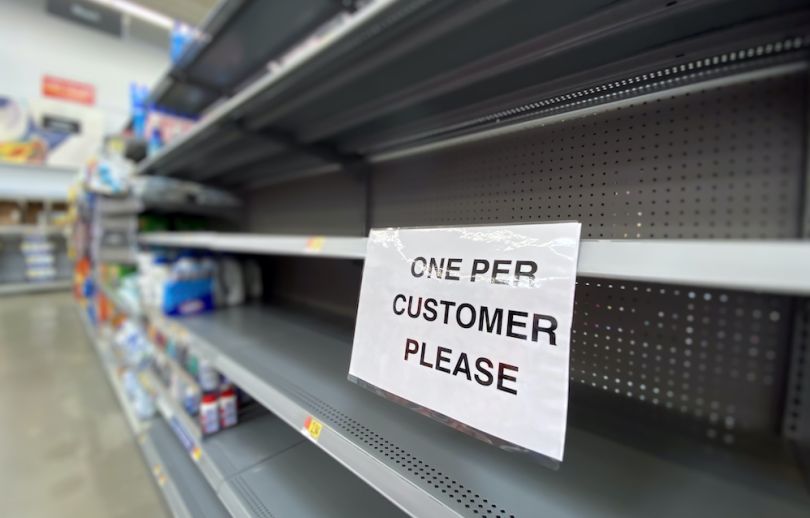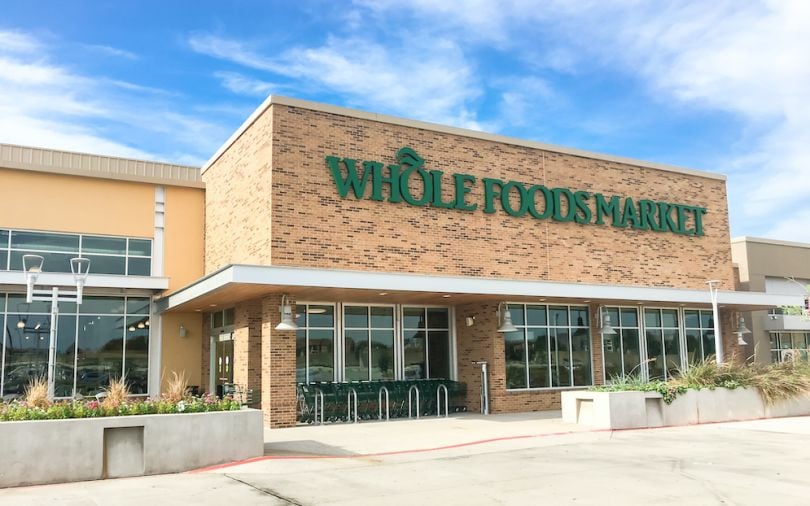If you’ve gone to the supermarket or pharmacy in the past month, you’ve probably seen it: Entire shelves of paper towels laid bare; hand sanitizer end-cap displays drained empty; shoppers in lines wrapped around storefronts, hoping to snag a six-pack of Charmin. You may have noticed, too, that securing an online grocery delivery requires equal parts patience and luck — those slots seemingly vanish the moment they’re posted.
That’s why Rithwik Pattikonda decided to take matters into his own hands. Back home from the University of Texas campus, where he studies computer science, the sophomore was tired of seeing his parents struggle to get the groceries they needed. Pattikonda’s parents had to visit a handful of stores just to cobble together a full haul of supplies, which felt like an unnecessary risk.
“It’s better that people go to only the stores that they need to, instead of going to six or seven stores just randomly trying and seeing if they have one specific product that they’re looking for,” Pattikonda told Built In. “A logical thing for us to do was to aggregate all this information into a single website.”
So, Pattikonda teamed up with Darshan Bhatta, a fellow computer science major, and did just that. Last month, they launched the website instok.org. Go to the website and punch in anything you need — toilet paper, disinfectant wipes, moose tracks ice cream — along with your ZIP code, and the site calls up an (almost) real-time inventory of those items at your nearby big-box stores, such as Target, Walmart and CVS.
The idea is that by seeing which items are available where, you’ll cut down on the amount of stores you have to visit in order to get the supplies you need. This know-before-you-go system will limit shoppers’ exposure to each other, theoretically helping curb the spread of the coronavirus.

Adrian Hertel, a Georgetown University senior studying business analytics (and minoring in computer science), faced a similar situation. Both of his parents have autoimmune diseases, but they were still grocery shopping in public, despite the associated risks. Hertel asked them to give online grocery deliveries a shot. But that was easier said than done.
“We tried looking for grocery slots online, to get them groceries delivered, but couldn’t find anything,” Hertel said. Some people have had to wait days to get groceries delivered, and constantly refresh their web browsers to check if a new sign-up time became available.
So, he created a script, a computer program that would constantly refresh the delivery checkout web page, and monitor it for keywords — like “AM” or “PM” – which would only show up if a time slot appeared. If they did, the script would alert him and pull up the web page so he could quickly click the delivery time slot. This way, Hertel didn’t have to manually check on the page over and over; he could just set it and forget it.
It worked. Hertel’s parents were able to place a grocery delivery order without hovering over their computer screens. It dawned on Hertel that other people might appreciate it, too, so he launched the script on GitHub and watched it catch fire through word of mouth and online forums.
Supplementing stock data with user-generated information
Instok works differently than Hertel’s script. It scrapes the inventory data of grocery store websites, which it then bundles together in one easy-to-use interface. What you see is exactly what you’d see if you were performing the same search on the websites of each individual store; with Instok, though, you don’t have to do nearly as much clicking and typing and tab-opening — it pulls all that info for you. You can even compare prices between stores.
But that information, the website clearly explains, is not always updated in real time. In-store inventories aren’t immediately reflected online, so there’s still a chance you could venture to a store only to come away empty-handed.
To remedy this, Pattikonda and Bhatta rolled out a community forum, so Instok users can talk to each other. “If people are using the community forum, then you can share where you find some of these items, or like different things going on in your community,” Pattikonda said. “That’s more real-time than the inventory information.”
Within two and a half weeks of launching, Pattikonda said that instok.org saw “over 650,000 users.” As for what’s next for the teenagers and their website: “We’re trying to reach out to these retailers, having some conversations with people in this space to see if we can get access to more of this information directly through them,” he said.

Feature requests are still incoming
Hertel has also been busy iterating. He’s incorporating user feedback to sharpen the script’s usefulness. For example, I asked him if he could make it so the script automatically signs the shopper up for the time slot, rather than just alerting them to when it’s available. “I actually do have that feature running,” he said. “I’m still just refining it and polishing it before I release it.”
Hertel said this project is the first thing he’s posted to GitHub, and that he’s surprised — and thankful — that so many people have helped him along the way, offering suggestions and ideas for how to make it better. “It’s been cool to collaborate with other people,” he said.
For example, Hertel initially made the script to work with a Safari web browser on Mac OS, and just for Whole Foods and Amazon orders (his parents’ stores of choice). But he’s currently working with others online to soon make the script available for just about anybody to use, not just people with those specific limitations. Hertel told me he currently has a backlog of requests he’s trying to get through (and that his GitHub page garnered more than 80,000 views in two weeks).
Hertel’s simple script may have begun as a quick remedy to help his parents feel more safe when shopping for groceries, but in the few weeks since putting it online, his solution has impacted people around the world. He’s received several emails, full of encouraging stories from people who have been helped by using it — children trying to keep their aging parents from traveling to stores, single moms and nurses who are strapped for time, and someone with Crohn’s disease who relies on finding a reasonable delivery time for their groceries.
Hertel hasn’t yet decided what to do after he gets his diploma in May, but this project has kept him busy and his email inbox flooded.
“I can’t really keep up with all the messages,” he said.




